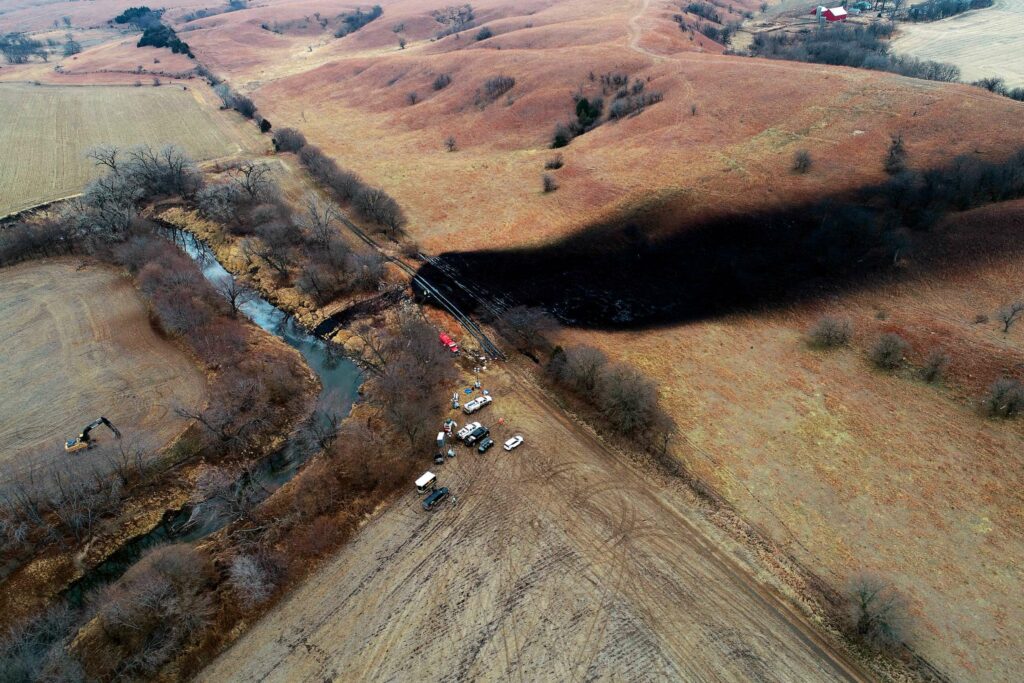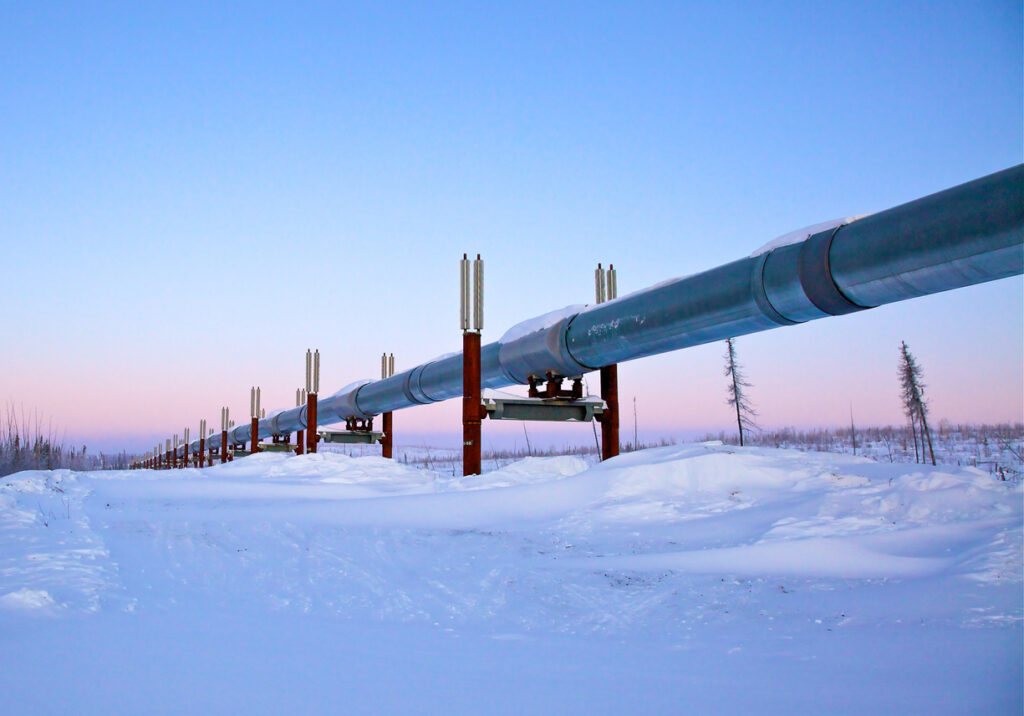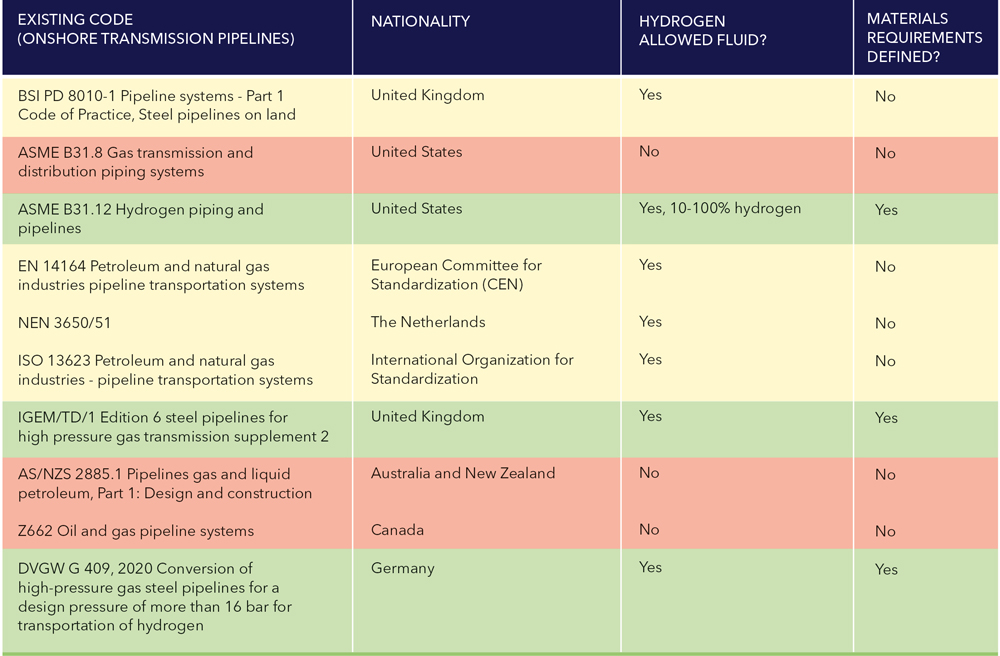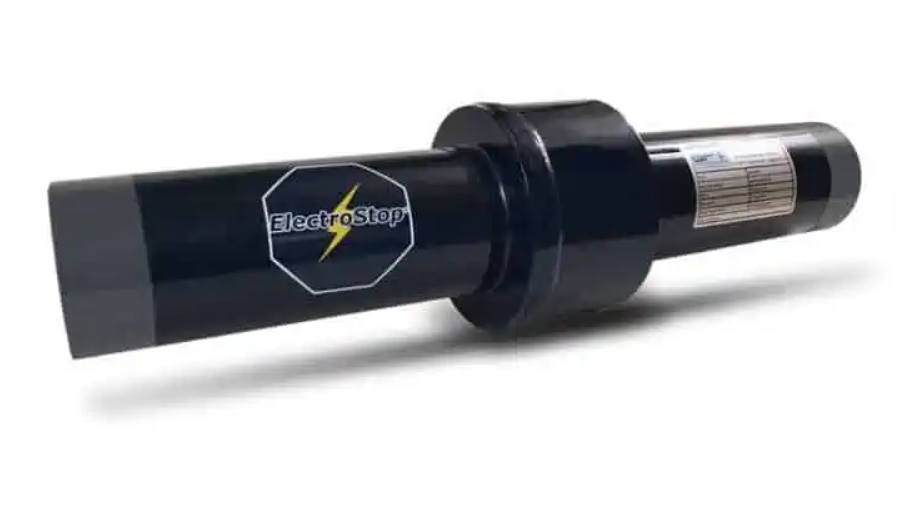At the 2022 United Nation Climate Change Conference (COP27), the U.S. Government announced that the administration was deploying $20 billion in new investments targeted at reducing methane emissions. This is an unprecedented level of funding from the government that is put toward the energy industry. The goal is to modernize pipelines and enhance pipeline safety.
There are a number of solutions that can be implemented within the industry. Installing leak detection systems, advanced routine monitoring, boosting pipeline safety systems, and properly plugging inactive oil and gas wells are viable options to mitigate methane emissions. Additional support results from preventing leaks in the pipe conveyance through product invention and development.
The U.S. Department of Transportation’s (DOT) Pipeline and Hazardous Materials Safety Administration (PHMSA) has prepared to provide $1 billion to reduce risks from municipality or community-owned legacy gas distribution pipelines that are prone to methane leaks. The investment is necessary to expedite methane reductions, especially in the energy sector, and prevent harmful pollution and leaks to the community.
In this article, we’ll examine the current state of pipelines in the United States and how the current move toward pipeline rehabilitation to reduce negative impact on human health and the environment has affected and will affect the corrosion mitigation industry.
The Current State of U.S. Pipelines
Many existing pipeline infrastructure is corroded and in need of rehabilitation or replacement. As an illustration, experts have estimated that 15% of New York City’s water mains are leaking. This figure can be scaled up to calculate the total number of pipes across the country that are in need of replacement. Driving factors that lead to leakage may range from poor workmanship during initial installation to a limited lifespan of the pipeline system.
It’s often difficult to monitor, inspect, or repair underground pipelines. This makes them susceptible to leaks, which typically occur at the pipe connection where two sections interface. According to a 2022 PHMSA report, in the last 15 years, pipeline leaks have incurred a total cost of $7.7 billion to the U.S. One example is a pipeline leakage that happened in Kansas in December 2022. The investigation suggested that a faulty weld connection caused a spill of 500,000 gallons of crude oil. This is not an uncommon occurrence. More than 578 pipeline incidents were reported in the U.S. in 2020 alone.
Such incidents trigger concerns in the community—from health and safety issues for those in the vicinity of the pipeline breakage to the financial impact for the pipeline industry, as well as the environmental impact.

Cleanup of the 2022 oil spill in Washington County, Kansas. (Source: ABC News / Associated Press)
After every incident, a restoration action is initiated to clean up the waste and slow down the damaging process, typically resulting in significant financial loss. For example, the 2022 Kansas oil spill cleanup required about $480,000 and countless workers’ hours. This emphasizes the need to mitigate corrosion and leaks on the pipeline in the first place. The industry is encouraged to implement high-quality products as well as take a proactive and preventive approach that typically comes at a lower price point.
Climate Change, Safety, and Preparing for the Future
The oil and gas industry often unintentionally produces methane leaks from its operation. A study from 2012 to 2018 found that the U.S. oil and gas industry was emitting at least 13 million metric tons of methane waste every year. Those millions of tons could have energized approximately 10 million single-family homes. This is a significant incentive to reduce and, if possible, eliminate the leaks.
Methane leaks trigger global warming and climate change effects. Methane gas is colorless, odorless, and invisible to the naked eye. Its emissions cause 25% of global heating and temperature increases. Methane is a hydrocarbon with a rigid molecular structure. Thus, it has more than 80 times the warming power than carbon dioxide (CO2) over the first 20 years after it reaches the atmosphere. Even though CO2 has a longer-lasting effect, methane sets the pace for warming in the near term.
PHMSA has a number of rules and measures to reduce emissions:
- The Gas Gathering Pipeline Safety Rule was issued in 2006 and updated in 2021. With this rule, the industry shall meet reporting requirements and demonstrate the application of a set of minimum safety requirements on pipelines with large diameters and high operating pressures.
- The Automatic Shut-Off Valve Rule requires the operators to install automatic or remotely controlled shut-off valves on onshore pipeline systems that are equal to or larger than six inches in diameter. This includes new and replaced natural gas, carbon dioxide, and other hazardous liquid pipelines. These requirements will help prevent severe consequences to the public and environment following pipeline failures or ruptures.
- The Gas Transmission Pipelines Safety Rule provides guidance to the industry on several pipeline attributes that must be analyzed when determining threats that are applicable to a pipeline segment. The rule also specifies requirements on construction practices; for example, the operator should scan underground pipelines promptly after backfilling to identify any coating damage, and then remediate the pipe if damage exists.

Trans-Alaska pipeline along the Dalton Highway in winter. (Source: hisnow/iStock)
The professionals in the industry should also refer to the PHMSA’s rule to comply with additional prescriptive preventive and mitigation measures to manage electrical interference currents. This is necessary to prevent corrosion on the pipelines.
Enhancing pipeline connectivity not only prevents climate change, but it also protects the public in the vicinity of the pipeline. Workers and residents, who happen to be the closest to the pipe breakage location, are usually impacted the most. Thus, risk mitigation is essential to minimize the severity to the people in the vicinity. While keeping safety paramount, the pipeline owner is also motivated to maintain a good reputation and deliver excellent services through their practices.
Furthermore, repurposing the pipelines from liquid conveyance to hydrogen gas is also a beneficial option for the industry. As the European Union’s (EU) largest consumer of hydrogen as a feedstock for its industry, Germany is a leader in hydrogen consumption. The country’s demand is about 1.7 million tons of hydrogen, or 22% of the EU total.
Repurposing pipelines for hydrogen use offers an installation cost saving of approximately 10%–35% compared to a brand new development. As such, there is an added demand to make technological advancement on pipeline modernization. Retrofitting and/or replacement are currently key steps in repurposing existing pipelines for hydrogen uses. Making the retrofitting or replacement process more efficient will ease repurposing pipes for hydrogen use.
[Further Reading: Could Hydrogen Transport Mean Sustainability for the Pipeline Industry?]

Industry standards govern the construction and operation of natural gas pipelines. (Source: Pipeline & Gas Journal)
ASME B31.12 describes an assessment process to determine the suitability of existing steel pipes, which have been used for natural gas, to accommodate hydrogen conveyance. It also provides guidance to the operators or designers to select pipe materials and schedules to meet the new capacity requirements. Since ASME B31.12 is typically used for designing new hydrogen pipelines, its approach tends to be very conservative for repurposing existing pipes for hydrogen service. As such, additional research is necessary for future design guidelines and for improving industry standards.
Impact on Corrosion Industry Professionals
With the driving incentives described above, new demands arise in the pipeline sector, leading to a range of new, high-quality job opportunities for skilled workers. This necessitates new skills and knowledge for the professionals working in pipeline rehabilitation projects. Professional workers are encouraged to continue learning and developing solutions that will improve and make pipeline systems safer and more efficient.
An upstream effect also results as manufacturers and educational institutions are required to expand their research and development (R&D). The U.S. Government assists the industry and universities in developing technologies to reduce methane emissions from the oil, gas, and coal industries through the Advanced Research Projects Agency–Energy (ARPA-E) that offers the Reducing Emissions of Methane Every Day of the Year (REMEDY) program. Collectively, there is a total of $35 million in research activity targeted to lessen methane emissions in the coal, oil, and gas sectors over a three-year period. The program strives to reduce methane by 99.5% while satisfying the environmental criteria, and sets a maximum price at $40 per ton of CO2.
Preventing Pipeline Leaks and Corrosion
The industry needs more products that prevent pipeline leaks, improve efficiency in conveyance, perform high-level asset monitoring, and reduce energy waste. Companies like GPT Industries manufacture products that offer solutions for both new and retrofitted pipeline systems. The products enhance safety in pipe connections, provide real-time data about pipeline assets, and ensure continuity of the conveyance. This all promotes longevity of service lifetime in the industry and protects the environment. Such companies’ products are wide-ranging, including:
- Flange isolation gasket and kits, used to mitigate corrosion propagation between two interfacing metals. They also prevent leaks or seepages between uneven pipe/flange surfaces. The 3 mm stainless steel core EVOLUTION® isolation gasket and ANI 2500# compliant Pikotek® VCS® Isolating Gaskets/Kits are two such options. Both provide unique sealing and insulating advantages to pipeline systems and mitigate galvanic corrosion between metal flanges.
- Monolithic isolation joints, which are coated and lined with epoxy that helps prevent corrosion in a pipeline system. GPT’s ElectroStop® and ElectroJoint™ solid monolithic integrity eliminates a weak connection location that could be a source of leaks.
- Remote asset integrity monitoring systems, which provide real-time data for a complete understanding of a pipeline’s health, ensuring safety and optimization of the corrosion mitigation on the line. This understanding goes to ensure that corrosion will be reduced and that the systems to mitigate corrosion are performing properly. Historically this data has been regulated and required by PHMSA and DOT, in a manner that requires a person to manually gather readings for reporting. These readings are extremely time-consuming, challenging, unreliable, and inconsistent, along with only being taken at very specific times during the year. This provides a picture at that moment in time, but not a continuous view of the health of the pipeline. Products such as GPT’s Iso-Smart™ have now changed this by providing real-time data, logged and communicated to a user web portal, notifying the user of all events. Iso-Smart™ can monitor, track, and alert for anything tailored to the needs of cathodic protection, including isolation monitoring, critical bond monitoring, polarization on the pipeline, instant-off readings, and the differentiation of AC versus DC on the line. This provides instant knowledge if AC is on the pipeline, which is extremely dangerous in terms of corrosion. These AC readings can be interpreted to understand the current density present, as well as the frequency to locate the source. The readings ensure that the pipeline is being protected in every way against corrosion, which is critical for the safety and longevity of the pipeline.

Monolithic isolation joints like ElectroStop® are a leak-proof, maintenance-free, and long-lasting block against the flow of electric current in pipeline systems. (Source: GPT Industries)
Enhancing Routine Monitoring on Leak Detection Systems
Drones, satellites, and infrared cameras are examples of advanced technologies that are used to detect methane leaks and that do aerial monitoring. Alternatively, methane sensors and optical gas imaging cameras, mounted on a vehicle that is driven over the area of pipeline networks, can be utilized to detect methane leaks on the ground. Imaging technology using spectrometers is also beneficial to survey methane plume locations and assess impacted areas. The administration also released new standards that require operators to take actions following a credible third-party report of significant leaks. This is implemented in the Super-Emitter Response Program.
Monitoring remote areas, where pipeline assets are located for the natural gas and corrosion industry, is very difficult and dangerous. Often, it is also cost prohibitive to install and operate conventional detection systems at the sites. Therefore, remote monitoring becomes an essential part of the asset. It provides owners with early warnings / alerts and real-time information about the asset conditions. With the assistance of a remote monitoring device, despite physical limitations, owners and users can gain insights and make thoughtful decisions, enhance workers’ safety, and respond quickly to prevent problems on their assets. Remote monitoring systems also help regular maintenance activities by improving operational safety, lowering costs, and minimizing productivity downtime.
Products like GPT Industries’ Iso-Smart™ enable owners to compile and access the data of their asset quickly. The system is wireless and thus minimizes the need for a physical presence in the field. It helps solve a critical safety problem in remote applications both reliably and cost-effectively.
Boosting Pipeline Safety Systems
In the event of pipeline failure, the operator usually takes a substantial period of time to stop the leak and control the damage. Automatic shut-off valves are one solution to immediately terminate the flow, which in turn will minimize the failure impact. The valve will automatically shut off as soon as it detects irregular flow rates and/or significant pressure change. Faster shutdown times in the system will also allow faster access for the emergency first responders to cease fires and help with injuries. This is a part of the aforementioned rules issued by PHMSA.
Managing Abandoned Oil & Gas Wells
Unplugged or poorly plugged oil and gas wells can create a petroleum stream to leach into underground aquifers. They may also release hazardous air pollutants that can lead to increased levels of global ozone. If they’re located close to a residential area, they may cause methane to concentrate inside homes and buildings, which causes an escalating risk of explosion. One approach to properly plug and abandon a well is by placing cement into the well, curing the cement, and inserting bentonite gel (clay-water mix) to space cement plugs at designated intervals. Then, the operator should conduct a final survey using optical gas imaging technology to confirm that there is no leak found in the area.
In summary, the U.S. Government has provided substantial funds to improve oil and gas pipeline safety, preventing leaks and all associated severe consequences. While the government has initiated various programs to achieve this goal, the industry is also encouraged to continue and enhance its innovation. Products like GPT Industries’ range of flange isolation gaskets/kits and monolithic isolation joints are one such option, offering safety in pipe connections for the energy sector.